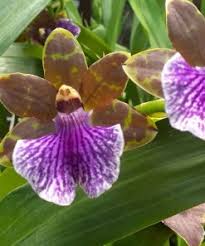# How to Solve Leaf Wilting Issues in Da Châu Orchids

Da Châu orchids (*Dendrobium chaochowense*) are admired for their stunning beauty and unique blooms. However, like all orchids, they can face various challenges that affect their health and vitality. One of the most common issues encountered by orchid enthusiasts is leaf wilting. This problem not only impacts the plant’s aesthetics but can also indicate underlying health issues. In this comprehensive guide, we will explore the causes of leaf wilting in Da Châu orchids, effective solutions, and preventative measures to ensure these beautiful plants thrive in your care.
## Understanding the Causes of Leaf Wilting
Before implementing solutions, it’s essential to understand the factors that contribute to leaf wilting in Da Châu orchids. Several environmental and care-related issues can lead to this condition.
### 1. Insufficient Watering
**Description**: Orchids require a specific amount of water, and both overwatering and underwatering can lead to wilting.
**Symptoms**: Leaves may appear limp, and the plant may show signs of dehydration, such as shriveled leaves or a general lack of vigor.
### 2. Overwatering
**Description**: While orchids need water, excess moisture can suffocate the roots and lead to rot.
**Symptoms**: Wilting leaves may be accompanied by yellowing or browning tips, mushy roots, and a foul odor from the potting medium.
### 3. Poor Drainage
**Description**: If the potting medium does not drain well, water can accumulate, leading to root rot.
**Symptoms**: Similar to overwatering, the roots may appear blackened or mushy, and the leaves will wilt.
### 4. Inadequate Light
**Description**: Orchids require bright, indirect light for optimal growth. Insufficient light can weaken the plant.
**Symptoms**: Wilting leaves may be a sign of inadequate light exposure, and the plant may exhibit slow growth.
### 5. Extreme Temperatures
**Description**: Da Châu orchids thrive in a specific temperature range. Extreme heat or cold can stress the plant.
**Symptoms**: Leaves may wilt or curl, and the plant may exhibit signs of stress, such as dropped buds or slowed growth.
### 6. Nutrient Deficiencies
**Description**: A lack of essential nutrients can weaken the plant and contribute to wilting.
**Symptoms**: Yellowing leaves, stunted growth, and wilting may indicate nutrient deficiencies, particularly nitrogen or potassium.
### 7. Pest Infestation
**Description**: Pests such as aphids, spider mites, or mealybugs can sap the vitality of the plant.
**Symptoms**: Wilting leaves may be accompanied by visible pests, webbing, or sticky residue on the leaves.
### 8. Disease
**Description**: Fungal or bacterial infections can cause wilting and may lead to more severe issues if not addressed.
**Symptoms**: Discoloration, soft spots, or mold on the leaves may accompany wilting.
## Step-by-Step Solutions for Leaf Wilting
Once the underlying cause of leaf wilting has been identified, you can take appropriate action to address the issue. Here’s a step-by-step guide to resolving wilting in Da Châu orchids.
### Step 1: Assess Watering Practices
1. **Check the Moisture Level**: Use your finger or a moisture meter to check the potting medium’s moisture level. If it feels dry several inches down, the plant likely needs watering. If it’s soggy, it may be overwatered.
2. **Adjust Watering Schedule**: For underwatered orchids, increase the frequency of watering, ensuring that water penetrates the potting medium. For overwatered orchids, allow the medium to dry out completely before resuming a less frequent watering schedule.
3. **Water Properly**: When watering, do so thoroughly, allowing excess water to drain out of the bottom of the pot. Avoid letting the plant sit in standing water.
### Step 2: Improve Drainage
1. **Check Potting Medium**: Ensure that the potting medium is appropriate for orchids, providing good aeration and drainage. A mix of bark, sphagnum moss, and perlite is often ideal.
2. **Repot if Necessary**: If drainage issues persist, consider repotting the orchid into a fresh, well-draining medium. Choose a pot with drainage holes to prevent water accumulation.
### Step 3: Optimize Light Conditions
1. **Evaluate Light Exposure**: Determine whether the orchid is receiving adequate light. Ideally, Da Châu orchids prefer bright, indirect light.
2. **Adjust Placement**: If the plant is in low light, move it to a brighter location, such as near a window with filtered sunlight. If it receives too much direct sunlight, consider using sheer curtains to diffuse the light.
### Step 4: Manage Temperature
1. **Monitor Temperature Levels**: Maintain a consistent temperature range for Da Châu orchids, ideally between 65°F to 85°F (18°C to 29°C) during the day and slightly cooler at night.
2. **Avoid Temperature Extremes**: Keep the plant away from drafts, heating vents, or air conditioning units to prevent sudden temperature fluctuations.
### Step 5: Address Nutrient Deficiencies
1. **Choose a Balanced Fertilizer**: Use a balanced orchid fertilizer, following the manufacturer’s instructions for dilution and frequency.
2. **Apply Nutrients**: Fertilize the plant during the growing season (spring and summer) to provide essential nutrients. Adjust the feeding schedule based on the plant’s response.
### Step 6: Inspect for Pests
1. **Check for Pests**: Regularly inspect the orchid for signs of pests. Look for small insects, webbing, or sticky residues on the leaves.
2. **Treat Infestations**: If pests are detected, treat the plant with insecticidal soap or neem oil, following the product’s instructions. Reapply as necessary until the pests are eradicated.
### Step 7: Diagnose and Treat Disease
1. **Examine for Signs of Disease**: Look for discoloration, soft spots, or mold on the leaves. If any of these symptoms are present, a disease may be affecting the plant.
2. **Remove Affected Areas**: Cut away any diseased or damaged leaves with sterilized scissors to prevent the spread of the infection.
3. **Apply Appropriate Treatments**: Use fungicides or bactericides as needed, following the manufacturer’s instructions for application.
### Step 8: Create a Care Routine
1. **Establish a Regular Care Schedule**: Set a consistent routine for watering, fertilizing, and inspecting your Da Châu orchids to keep them healthy.
2. **Monitor Plant Health**: Regularly assess the health of your orchids, looking for any signs of stress or wilting. This proactive approach will help you catch issues early.
## Preventative Measures to Ensure Orchid Health
Preventing leaf wilting in Da Châu orchids is just as important as addressing existing issues. Here are some preventative measures to keep your orchids healthy and thriving.
### 1. Choose Quality Plants
When purchasing orchids, select healthy plants from reputable sources. Inspect the leaves, roots, and potting medium for any signs of stress or disease.
### 2. Provide Proper Care
Ensure that you provide appropriate care for your orchids, including correct watering, lighting, and temperature conditions. Understanding the specific needs of Da Châu orchids will help you provide optimal care.
### 3. Regularly Inspect Plants
Make it a habit to inspect your orchids weekly for any signs of wilting, pests, or diseases. Early detection allows for prompt intervention and can prevent more significant issues.
### 4. Adjust Seasonal Care
Be aware of seasonal changes and adjust your care routine accordingly. Orchids may require different watering and lighting conditions in the winter compared to the summer.
### 5. Educate Yourself
Stay informed about best practices for orchid care through books, online resources, or local orchid societies. Continuous learning will enhance your ability to care for your orchids effectively.
### 6. Foster a Healthy Environment
Create a suitable environment for your orchids, considering humidity levels, air circulation, and light exposure. Use humidifiers or pebble trays to maintain adequate humidity, especially during dry seasons.
### 7. Maintain a Clean Workspace
Keep your gardening tools and workspace clean to prevent the introduction of pests and diseases. Sterilize tools regularly and ensure your pots and growing mediums are free from contaminants.
### 8. Join an Orchid Community
Engaging with other orchid enthusiasts can provide valuable insights and tips. Consider joining local orchid clubs or online forums where you can share experiences and learn from others.
## Conclusion
Addressing leaf wilting in Da Châu orchids requires a systematic approach to identify and resolve the underlying causes. By assessing watering practices, improving drainage, optimizing light conditions, managing temperature, and addressing nutrient deficiencies, you can effectively revive your orchids. Additionally, regular inspections and preventative measures will help ensure your Da Châu orchids remain healthy and vibrant. With the right care, these beautiful orchids will flourish, bringing joy and beauty to your home or garden for years to come.

